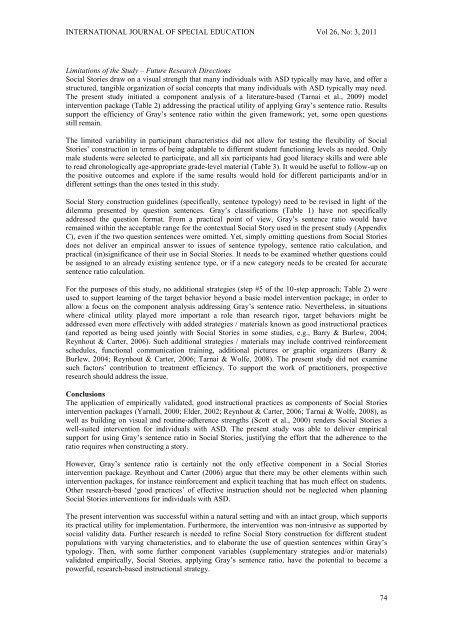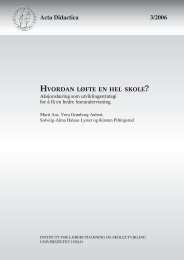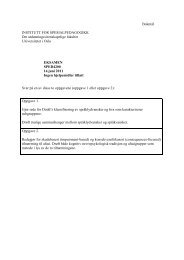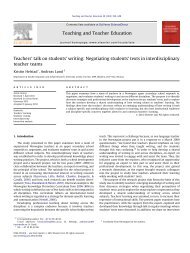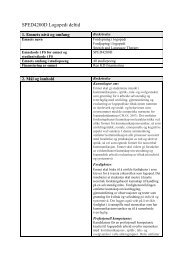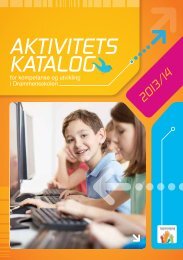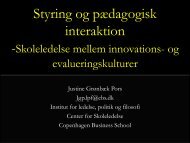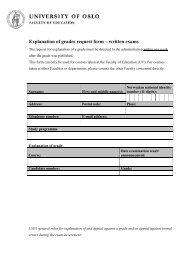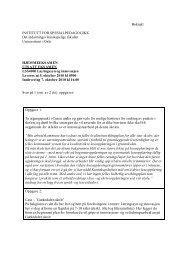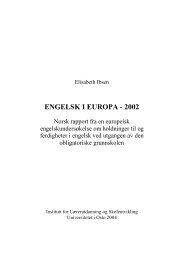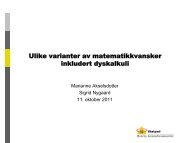International Journal Special Education
International Journal Special Education
International Journal Special Education
Create successful ePaper yourself
Turn your PDF publications into a flip-book with our unique Google optimized e-Paper software.
INTERNATIONAL JOURNAL OF SPECIAL EDUCATION Vol 26, No: 3, 2011Limitations of the Study – Future Research DirectionsSocial Stories draw on a visual strength that many individuals with ASD typically may have, and offer astructured, tangible organization of social concepts that many individuals with ASD typically may need.The present study initiated a component analysis of a literature-based (Tarnai et al., 2009) modelintervention package (Table 2) addressing the practical utility of applying Gray’s sentence ratio. Resultssupport the efficiency of Gray’s sentence ratio within the given framework; yet, some open questionsstill remain.The limited variability in participant characteristics did not allow for testing the flexibility of SocialStories’ construction in terms of being adaptable to different student functioning levels as needed. Onlymale students were selected to participate, and all six participants had good literacy skills and were ableto read chronologically age-appropriate grade-level material (Table 3). It would be useful to follow-up onthe positive outcomes and explore if the same results would hold for different participants and/or indifferent settings than the ones tested in this study.Social Story construction guidelines (specifically, sentence typology) need to be revised in light of thedilemma presented by question sentences. Gray’s classifications (Table 1) have not specificallyaddressed the question format. From a practical point of view, Gray’s sentence ratio would haveremained within the acceptable range for the contextual Social Story used in the present study (AppendixC), even if the two question sentences were omitted. Yet, simply omitting questions from Social Storiesdoes not deliver an empirical answer to issues of sentence typology, sentence ratio calculation, andpractical (in)significance of their use in Social Stories. It needs to be examined whether questions couldbe assigned to an already existing sentence type, or if a new category needs to be created for accuratesentence ratio calculation.For the purposes of this study, no additional strategies (step #5 of the 10-step approach; Table 2) wereused to support learning of the target behavior beyond a basic model intervention package; in order toallow a focus on the component analysis addressing Gray’s sentence ratio. Nevertheless, in situationswhere clinical utility played more important a role than research rigor, target behaviors might beaddressed even more effectively with added strategies / materials known as good instructional practices(and reported as being used jointly with Social Stories in some studies, e.g., Barry & Burlew, 2004;Reynhout & Carter, 2006). Such additional strategies / materials may include contrived reinforcementschedules, functional communication training, additional pictures or graphic organizers (Barry &Burlew, 2004; Reynhout & Carter, 2006; Tarnai & Wolfe, 2008). The present study did not examinesuch factors’ contribution to treatment efficiency. To support the work of practitioners, prospectiveresearch should address the issue.ConclusionsThe application of empirically validated, good instructional practices as components of Social Storiesintervention packages (Yarnall, 2000; Elder, 2002; Reynhout & Carter, 2006; Tarnai & Wolfe, 2008), aswell as building on visual and routine-adherence strengths (Scott et al., 2000) renders Social Stories awell-suited intervention for individuals with ASD. The present study was able to deliver empiricalsupport for using Gray’s sentence ratio in Social Stories, justifying the effort that the adherence to theratio requires when constructing a story.However, Gray’s sentence ratio is certainly not the only effective component in a Social Storiesintervention package. Reynhout and Carter (2006) argue that there may be other elements within suchintervention packages, for instance reinforcement and explicit teaching that has much effect on students.Other research-based ‘good practices’ of effective instruction should not be neglected when planningSocial Stories interventions for individuals with ASD.The present intervention was successful within a natural setting and with an intact group, which supportsits practical utility for implementation. Furthermore, the intervention was non-intrusive as supported bysocial validity data. Further research is needed to refine Social Story construction for different studentpopulations with varying characteristics, and to elaborate the use of question sentences within Gray’stypology. Then, with some further component variables (supplementary strategies and/or materials)validated empirically, Social Stories, applying Gray’s sentence ratio, have the potential to become apowerful, research-based instructional strategy.74


